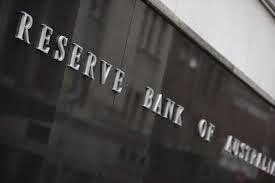Have You Heard of ‘The Rule of 752’?
I hadn’t till recently and was amazed by the power
of it.
Take a weekly expense and multiply it by 752. The
result is the real cost of that expense over 10 years had you invested the
money instead. It’s easy to ignore small expenses and I am probably the queen
of the little things. We don’t often think of the small things when we look at
spending, then we wonder why the budget seems so out of control. Yet it’s often
the small daily expenses that add up to a lifetime of financial frustration.
The Rule of 752 can add so much needed perspective.
With the Rule of 752 in mind, here are five
“small” expenses that might be killing your budget.
Account
Maintenance Fees
Have you checked your bank statements lately?
Fees can crop up with bank accounts, credit cards
and prepaid debit cards. While each fee by itself may not seem like a lot, they
add up quickly. In addition, there’s no reason to pay them. There are many
no-fee checking accounts, no annual fee credit cards, and even prepaid cards
that don’t charge a monthly fee. Furthermore, once you eliminate the fee,
you’ll save that money each and every month going forward. Getting rid of
unnecessary fees is a truly painless way to save money.
Unnecessary
TV & Phone Expenses
I miss the 1970s. We didn’t have cable, cellphones
or even remote controls. TV was free and Coke was sold in glass bottles. Today
many families pay hundreds of dollars each month for TV, Internet and
cellphones. Sure, we now have 500 channels, and cellphones far more powerful
than the first computers, but the costs can get out of control. To monitor the
costs, look through your bills carefully. First search for fees on services or
equipment you’re not using.
Second, make sure you need the level of service
you’re paying for. Recently, I learned we were paying for far more data than we
ever used on our cellphones.
And third, consider alternatives. Prepaid
cellphone services, for example, can save you a bundle over those two-year
contracts with major carriers.
Subscriptions
This is one of my expenses I am looking at as I
don’t have time read all the magazines coming across my desk each month and I
know I can access them free on the net. You might pay “only” $30 a year for a
monthly subscription to some magazine, but do you even read it? And could you
get the information for free online? If you wander down to the local OP Shop ,
it is amazing the piles of magazines they are selling that would amount to a
small fortune in subscriptions.
It seems like a small amount, but when you add up
the fact that you are paying it over time, and you might not even use the subscription
very much, it just becomes another regular expense that you have to pay each
month.
Convenience
Fees
Sometimes when you buy things over the phone, you
are charged a convenience fee. Other times, the “convenience” fee is more of a
small fee that you are charged when your bank sends you a paper statement. It
can be as simply as the $2 fee every time you withdraw money at the ATM –
instead of a daily withdraw, work out
what you need for the week ahead and make one withdrawal for the whole week -
$2 a day x 752 = $1,504 just to withdraw your own money!
Credit
Card Interest
We all know credit cards are addictive. For what
seems like a small monthly payment, a credit card enables you to buy now and
pay later. Like the Siren songs of Greek mythology, however, credit cards can
quickly lead to financial ruin. The high interest rate associated with credit
cards can really add up over time if you carry a balance and make only the
monthly payments. By the time you pay off the credit card, you might have carried
that debt for 10 years and have repaid three times what you borrowed in
interest alone.
It seems like a small thing, but it turns into a
big deal over time.
Before you get excited about how you can put a
$1,800 purchase on a credit card and “only” pay $54 a month, remember that it’s
very possible that more than half of your payment is going toward interest, so
you’re only reducing your debt by $27 or so each month. Go through your
expenses, see where you are wasting money, and then try to plug those leaks.
Take advantage of free budgeting tools that are available on the net.
Have fun with the calculator – remember 752……..
Jenny Bosma
Jenny Bosma



